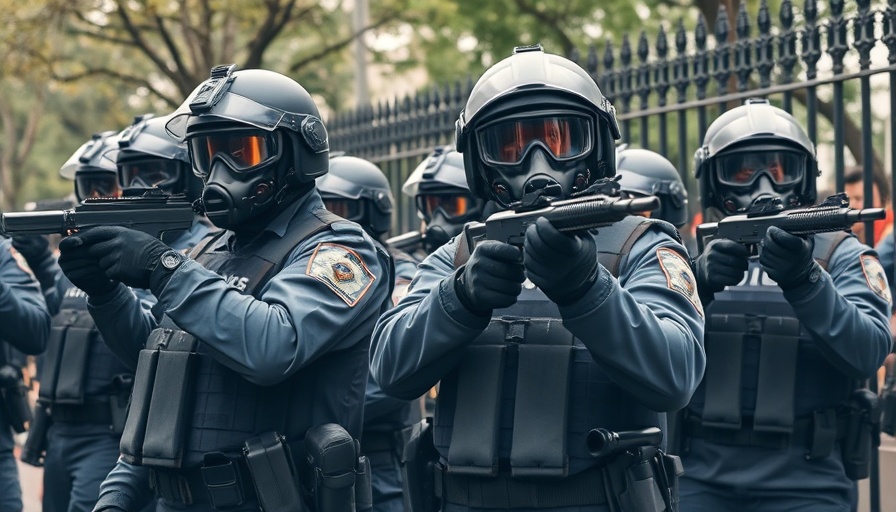
Understanding the Dangers Lurking Behind 'Nonlethal' Weapons
As protests across the U.S. grow in frequency and intensity, particularly in reaction to immigration enforcement tactics, the implications of so-called "nonlethal" weapons have gained urgent attention. These weapons, including tear gas and rubber bullets, utilize technology that is often marketed as safe for crowd dispersal but can actually inflict serious injuries.
The Reality of 'Nonlethal' Usage
During the recent protests in Los Angeles against Immigration and Customs Enforcement (ICE) raids, local law enforcement deployed various nonlethal measures, including the PGL-65 and Sage Deuce projectile launchers. While these weapons are intended to minimize fatalities, studies show that they can lead to significant injury, such as fractures, organ damage, or even death. Moreover, when examining their deployment in public demonstrations, critics argue that the category of these weapons is misleading. As public pressure mounts and states like Canada outlaw such devices for managing protests, it raises questions about the ethics and effectiveness of these tools.
International Perspectives on Crowd Control
Countries such as Canada have decided to ban the use of these 'nonlethal' weapons outright, taking a step to protect citizens from potential harm. Their laws reflect a commitment to public safety and an acknowledgment of the significant risks associated with these devices. Comparatively, the U.S. continues to deploy such technologies despite growing international disapproval.
The Political Climate Influencing Law Enforcement Tactics
The deployment of the National Guard in Los Angeles amidst complaints about ICE raids reveals a troubling political backdrop. As Governor Gavin Newsom criticized the federal response as an exaggerated national threat, civil rights groups echoed similar sentiments, emphasizing that militarized police presence tends to suppress free expression rather than safeguard communities. This rising tension suggests a shift in the perception of government accountability regarding public protests.
Engaging with the Ethical Dilemmas
Using 'nonlethal' weapons against protesters confronts us with ethical questions about state power and citizen rights. Critics argue that deploying these weapons during demonstrations does not protect community interests, but rather serves to intimidate and control dissenting voices. As reliance on these technologies increases, communities must ponder their role in responding to civil unrest and what long-term effects these strategies might have on democratic participation.
The Future of Protest Response Technologies
With the ongoing evolution of crowd control methods, experts encourage a re-examination of 'nonlethal' terminology. As societies wrestle with maintaining public order and safeguarding civil liberties, there's a pressing need for comprehensive reform. Policymakers should explore advancements that prioritize de-escalation and community engagement instead of confrontation. Innovations in communication, rather than weaponry, could reshape the landscape of public protests.
Conclusion: A Call for Awareness and Reform
The issues surrounding nonlethal weapons in public protests are complex and deeply intertwined with societal values regarding freedom and safety. As citizens, it is critical to engage with these conversations and push for accountability in law enforcement practices. Understanding the implications of these technologies can help build a safer framework for civil demonstrations, ensuring that dissent can be expressed without fear of violent retaliation. By educating ourselves and advocating for safer, more humane approaches to crowd control, we are taking a meaningful step toward fostering a more democratic society.
 Add Row
Add Row  Add
Add 




Write A Comment